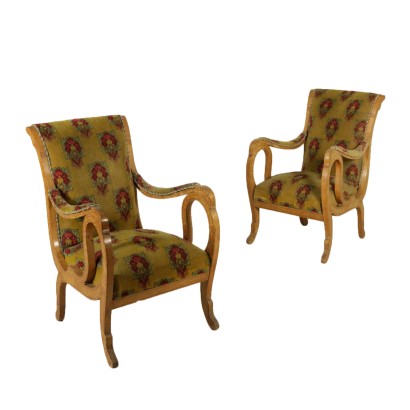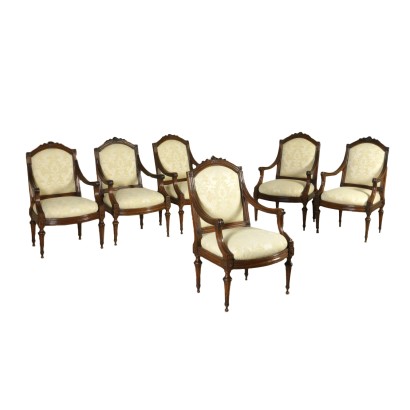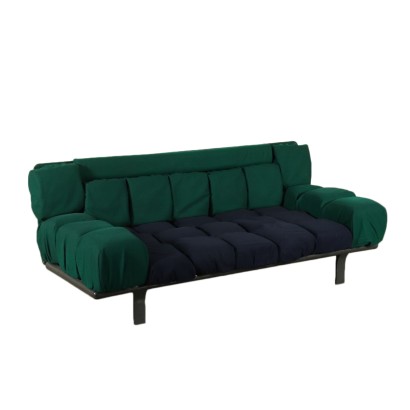Pair of Inlaid Biedermeier Armchairs Austria 19th Century - Attributed to Johann Nepomuk Geyer
Features
Attributed to Johann Nepomuk Geyer
Style: Biedermeier (1815-1848)
Age: 19th Century / 1801 - 1900
Origin: Vienna, Austria
Main essence: Ash Tree , Rosewood
Material: Ash Burl
Description
Pair of Biedermeier armchairs attributed to Johann Nepomuk Geyer, finely inlaid ash burl with rosewood threads on the whole surface. Perfectly in line with the Biedermeier taste of the 1830s. The seats are decorated with curves and volutes leaning on each other elegantly. Removable seats, the fabric is in Art Nouveau style and was probably replaced at the end of the century. Manufactured in Austria, second quarter of the 19th century.
Product Condition:
The item shows signs of wear due to age. Any damage or loss is displayed as completely as possible in the pictures. It may require restoration and recovery of french polish.
Additional Information
Style: Biedermeier (1815-1848)
The Biedermeier style is a style that characterizes German and Austrian furniture between approximately 1815 (Congress of Vienna) and 1848 (beginning of the revolutionary movements).Its main features are essentiality and functionality, and the home destination.
Biedermeier first took on a derogatory connotation: the word derives from "Bieder", or "simpleton" and from "Meir", one of the most common German surnames at the time and was the name of a "simpleton" character in a comedy of Ludwig Eichrodt.
This term meant the conservative petty bourgeois, concerned only with his own family reality.
Even if in a derogatory way, the term represents exactly the new socio-political situation in which the bourgeois is forced or resigned to renounce the yearnings for democracy and freedom.
The center of life therefore becomes the home, no longer characterized by unbridled luxury but comfortable and practical.
Consequently, Biedermeier furniture are functional, comfortable and easily achievable products.
The style is an evolution of the Empire style towards greater simplification, without ornamental and antique elements, lighter, linear and curved shapes, lighter colors.
Find out more about the Biedermeier style with our insights:
Biedermeier, the comfortable and practical style
Biedermeier, when a style d 'furniture transforms an environment
FineArt: group eight Biedermeier applique, Vienna, 1820-1830
FineArt: Biedermeier Reifenluster, Vienna, c. 1820-1830 - Viennese chandelier

































